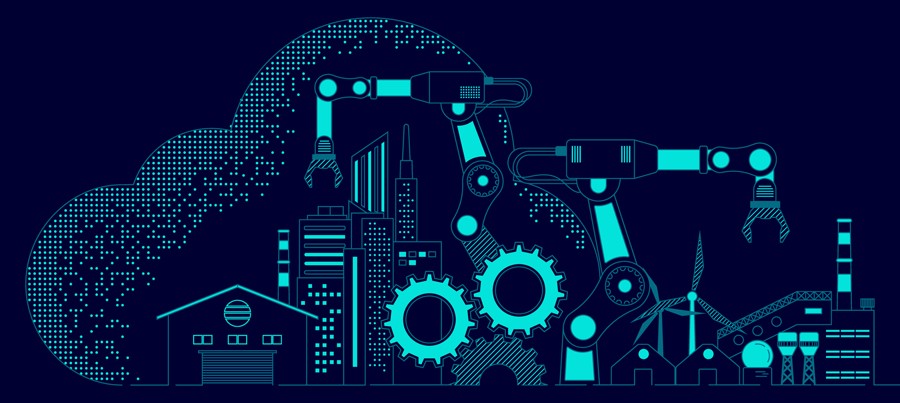SCADA vs. IIoT: Technologies Defining Next-Gen Factories

Digital factory operations depend on data, so they need systems for collecting and processing it. Years ago, supervisory control and data acquisition (SCADA) and programmable logic controller (PLC) systems ruled the roost, providing pathways for digitization and automation in the earliest stages of Industry 4.0. Now the Industrial Internet of Things (IIoT) is taking the place of these antiquated systems to provide a broad new array of robust digitization capabilities. Let’s dive deeper into SCADA and IIoT to see how the former provided a springboard for the latter, and how modern digital factories operate.
SCADA: the foundations of automation
SCADA is a decades-old technology that various industries, including the manufacturing sector, use to monitor and manage applications and processes. It’s a combination of hardware and software that collects, processes, and monitors real-time data, allowing for direct interaction with smart devices and human-machine interface software.
Industries such as oil and gas, mining, and railways rely on SCADA systems to monitor everything from equipment to environmental factors. Some industries are even investing in fourth-generation SCADA applications in combination with IIoT. Overall, SCADA reduces waste by identifying inefficiencies and reducing costs, and its benefits are enhanced when used in conjunction with IIoT.

IIoT: the next step into the future of digitization
Consider IIoT as an enhanced technology implemented on top of SCADA. There’s nothing that holds more promise, or more hype, when it comes to industrial data collection. While the uses for SCADA and IIoT are identical, the technologies themselves are quite different.
IIoT provides more flexibility and more open standards than SCADA. For example, IIoT sensors are wireless, while SCADA sensors require a wired connection to a PLC. IIoT is cloud-based, enabling remote access anywhere with a Wi-Fi connection. SCADA costs more to implement due to the wired sensors and any necessary modifications. IIoT also wins in terms of interoperability, with open standards enabling diverse systems to communicate.
SCADA and IIoT are driving Industry 4.0
SCADA was a great foundation for the IIoT, which is growing more robust by the day. In many cases, SCADA systems no longer serve their intended purpose, necessitating upgrades. While IIoT is still in its infancy, forward-thinking manufacturers understand implementing the technology now gives them a competitive advantage. IIoT will only continue to get better over time, giving the manufacturing industry — and many other sectors — an easier, more efficient way to control systems, monitor and manage equipment, and more.
As Industry 4.0 becomes more established, manufacturers have SCADA and IIoT technologies to thank. Whether they invested in the foundational systems SCADA enabled or are pondering large-scale investment in IIoT, it’s clear these technologies are imperative for the factory of the future.